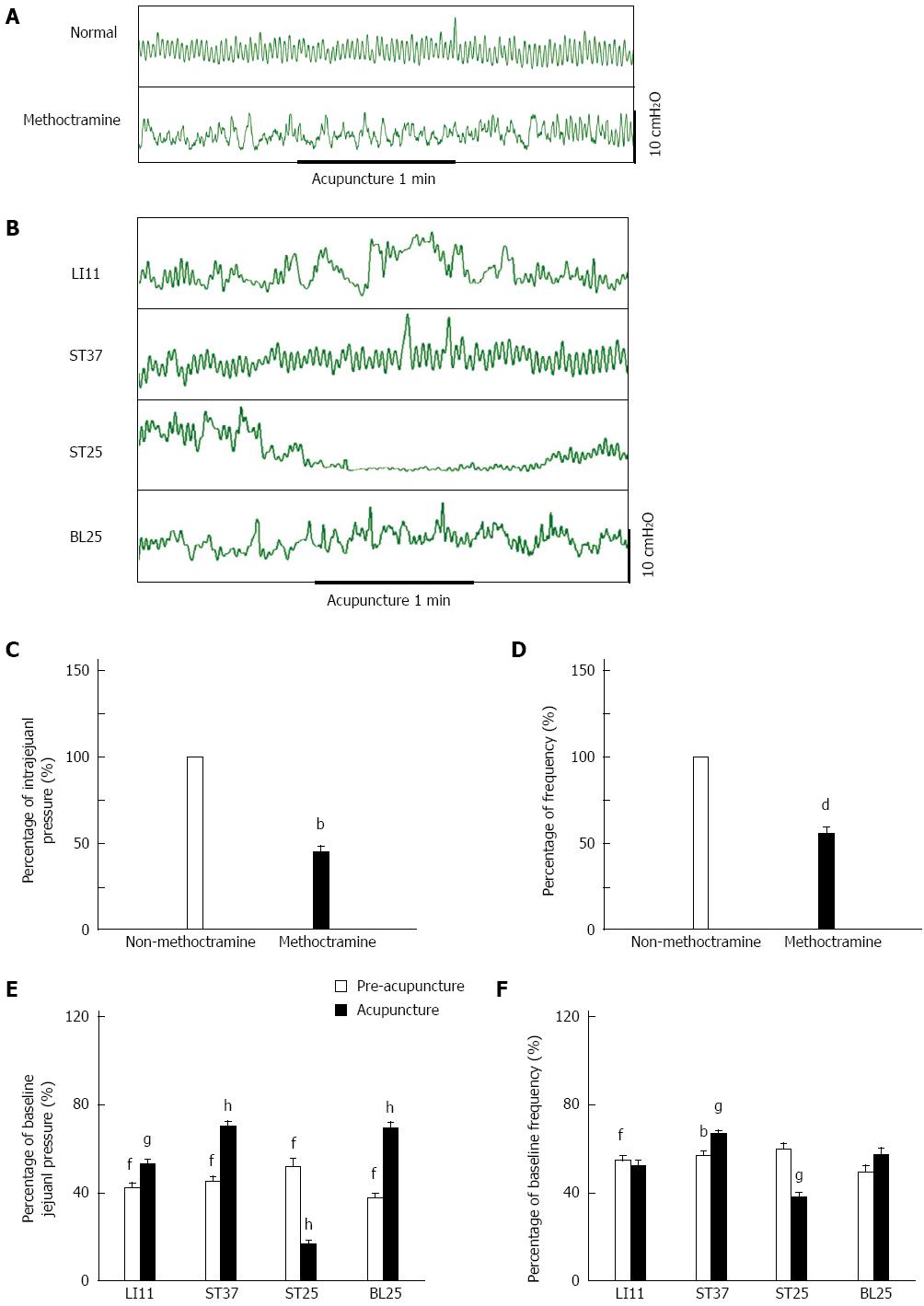Copyright
©2014 Baishideng Publishing Group Inc.
World J Gastroenterol. Dec 28, 2014; 20(48): 18271-18283
Published online Dec 28, 2014. doi: 10.3748/wjg.v20.i48.18271
Published online Dec 28, 2014. doi: 10.3748/wjg.v20.i48.18271
Figure 6 Effect of methoctramine on the regulations of jejunal motility by manual acupuncture at LI11, ST37, ST25, and BL25.
A: Representative traces of jejunal motility without and with methoctramine; B: Representative traces of the regulations of jejunal motility by acupuncture at LI11, ST37, ST25, and BL25 separately following the administration of methoctramine; C: Methoctramine reduced the intrajejunal pressure significantly (bP < 0.01 vs baseline, unpaired t-test, n = 10); D: Methoctramine decreased the frequency of jejunal motility significantly (dP < 0.01 vs control, unpaired t-test, n = 10); E: Acupuncture at LI11, ST37, and BL25 rescued the methoctramine-mediated inhibition of intrajejunal pressure significantly, but acupuncture at ST25 further decreased intrajejunal pressure in the presence of methoctramine (fP < 0.01 vs non-methoctramine; gP < 0.05, hP < 0.01 vs pre-acupuncture, paired t-test, n = 10). Intrajejunal pressure was normalized by baseline without any treatment, the dashed line denotes basal intrajejunal pressure without methoctramine; F: Only acupuncture at ST37 significantly rescued the methoctramine-mediated inhibition of frequency of jejunal motility (fP < 0.01 vs non-methoctramine, shown as the dashed line; gP < 0.05, hP < 0.01 vs pre-acupuncture, paired t-test, n = 10). Frequency was normalized by baseline without any treatment. The dashed line denotes basal frequency of jejunal motility without methoctramine.
- Citation: Qin QG, Gao XY, Liu K, Yu XC, Li L, Wang HP, Zhu B. Acupuncture at heterotopic acupoints enhances jejunal motility in constipated and diarrheic rats. World J Gastroenterol 2014; 20(48): 18271-18283
- URL: https://www.wjgnet.com/1007-9327/full/v20/i48/18271.htm
- DOI: https://dx.doi.org/10.3748/wjg.v20.i48.18271









